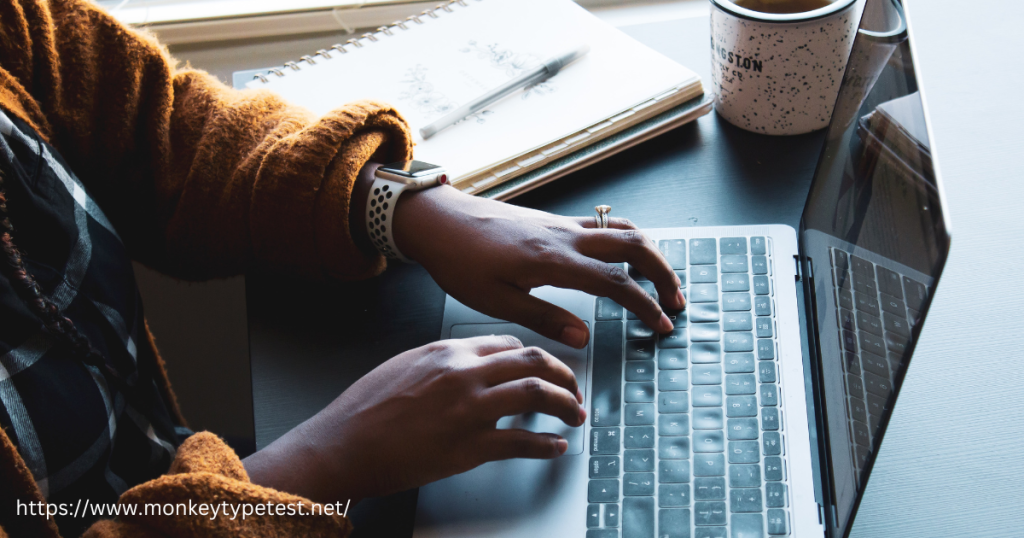
Typing has become an essential skill in today’s digital age. Whether you’re a student, professional, or gamer, improving your typing speed and accuracy can save time and boost productivity. In this blog, we’ll explore 10 practical tips to help you become a faster and more accurate typist.
1. Learn Touch Typing
Touch typing is the foundation of efficient typing. It involves using all ten fingers and typing without looking at the keyboard. Learning touch typing helps you develop muscle memory, which significantly improves your speed and accuracy over time. Online tools like Monkeytype can help you practice this skill.
2. Maintain Proper Posture
Your posture plays a vital role in typing. Sit with your back straight, feet flat on the floor, and elbows bent at a 90-degree angle. Ensure your wrists are slightly elevated above the keyboard to avoid strain. Proper posture not only prevents fatigue but also improves typing performance.
3. Use the Home Row Keys
The home row keys (A, S, D, F for the left hand and J, K, L, ; for the right hand) are your starting point for touch typing. Rest your fingers on these keys and learn to reach other keys from this position. Returning to the home row after typing each word keeps your hands in the optimal position.
4. Practice Regularly
Consistency is key to improving any skill, including typing. Dedicate at least 10–15 minutes daily to focused typing practice. Platforms like Monkey type offer customizable tests and challenges to help you track your progress and stay motivated.
5. Focus on Accuracy First
Speed comes naturally with practice, but accuracy should be your priority. Typing fast but making frequent mistakes slows you down in the long run. Concentrate on hitting the right keys without errors, and gradually increase your speed.
6. Use Online Typing Tools
There are numerous online tools and games designed to make typing practice engaging and effective. Monkeytype, for example, offers a variety of modes that cater to different skill levels, helping you improve both speed and accuracy.
7. Minimize Hand Movement
Efficient typists minimize hand and finger movement by keeping their fingers close to the keys. Avoid unnecessary lifting of fingers or moving your hands across the keyboard. This reduces strain and enhances typing efficiency.
8. Develop a Typing Routine
Create a daily routine for typing practice. Start with warm-up exercises, such as typing easy words or sentences, before moving on to more challenging tasks. A structured routine helps you develop muscle memory and improve steadily over time.
9. Use Typing Shortcuts
Learning keyboard shortcuts can save time and make you more productive. For instance, shortcuts like Ctrl+C for copy and Ctrl+V for paste are simple yet effective ways to speed up your work.
10. Stay Patient and Persistent
Improving your typing skills takes time and effort. Don’t get discouraged if you don’t see immediate results. Stay patient, practice consistently, and celebrate small improvements along the way.
Conclusion
Improving your typing speed and accuracy is a valuable skill that benefits you in many areas of life. By following these tips and practicing regularly, you can become a faster and more efficient typist. Remember, tools like Monkeytype can make your practice sessions more effective and enjoyable. Start today, and watch your typing skills improve over time.
